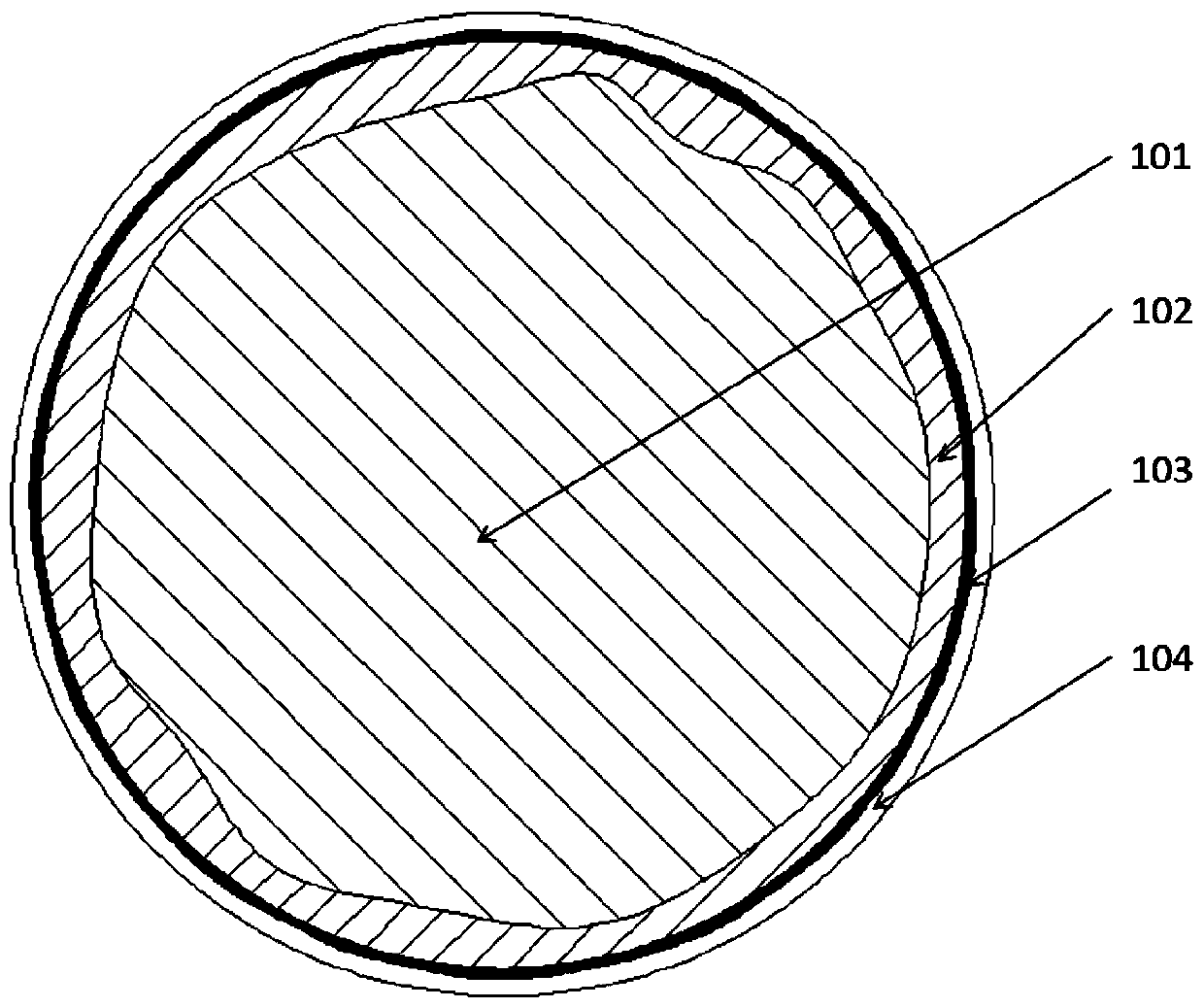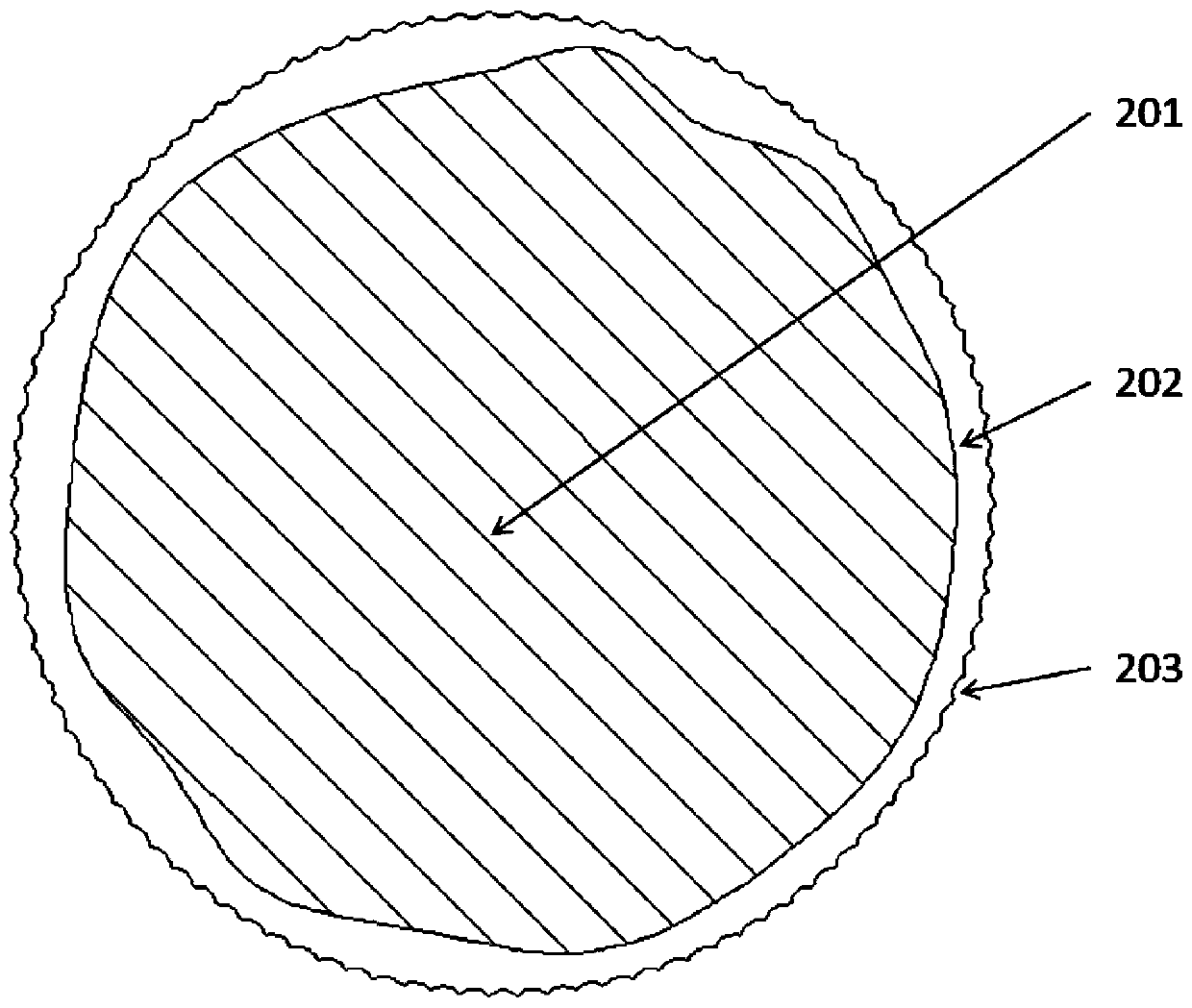Graphene/ceramic composite microparticles used for spray molding and preparation method of composite microparticles
A ceramic composite and ceramic particle technology, which is applied in the preparation of microspheres and microcapsule preparations, can solve the problems of environmental pollution, poor fluidity, and difficult to spray particles.
- Summary
- Abstract
- Description
- Claims
- Application Information
AI Technical Summary
Problems solved by technology
Method used
Image
Examples
Embodiment 1
[0022] (1) Sieve the ceramic powder through 200-mesh and 250-mesh sieves, and the particle size of the obtained ceramic particles is 61-74 μm; the water-based polyurethane resin is uniformly coated on the silica ceramic particles by boiling spray coating, The mass ratio of water-based polyurethane resin solution and ceramic powder during coating is 5:100, and the coating is performed twice to prepare water-based polyurethane resin / silica ceramic particles; the process parameters of the coating process are as follows: air inlet temperature 110°C, spray The rate is 2ml / s, and the drying time is 40 minutes; water-based polyurethane resin / silicon dioxide ceramic composite particles are obtained.
[0023] (2) Weigh water-based polyurethane resin / silica ceramic particles and graphene with a mass ratio of 100:0.5, and put them into a horizontal planetary ball mill for ball milling and mixing. The process parameters are as follows: water-based polyurethane resin / silica ceramic composit...
Embodiment 2
[0027](1) Sieve the ceramic powder through 200-mesh and 250-mesh sieves, and the particle size of the obtained ceramic particles is 61-74 μm; the water-based polyurethane resin is uniformly coated on the silica ceramic particles by boiling spray coating, The mass ratio of water-based polyurethane resin solution and ceramic powder during coating is 5:100, and the coating is performed twice to prepare water-based polyurethane resin / silica ceramic particles; the process parameters of the coating process are as follows: air inlet temperature 110°C, spray The rate is 2ml / s, and the drying time is 40 minutes; water-based polyurethane resin / silicon dioxide ceramic composite particles are obtained.
[0028] (2) Use low-temperature plasma to treat waterborne polyurethane resin / silicon dioxide ceramic composite particles. The gas for low-temperature plasma treatment is argon. The process parameters are: gas flow rate 70 ml / min, power 30w, and treatment time 3 minutes.
[0029] (3) Weigh...
Embodiment 3
[0033] (1) Sieve the ceramic powder through a 625-mesh and 800-mesh sieve, and the particle size of the obtained ceramic particles is 15-20 μm; the water-based polyurethane resin is uniformly coated on the silica ceramic particles by boiling spray coating, The mass ratio of water-based polyurethane resin solution and ceramic powder during coating is 5:100, and the coating is performed twice to prepare water-based polyurethane resin / silica ceramic particles; the process parameters of the coating process are as follows: air inlet temperature 110°C, spray The rate is 2ml / s, and the drying time is 40 minutes; water-based polyurethane resin / silicon dioxide ceramic composite particles are obtained.
[0034] (2) Use low-temperature plasma to treat waterborne polyurethane resin / silicon dioxide ceramic composite particles. The gas for low-temperature plasma treatment is argon. The process parameters are: gas flow rate 70 ml / min, power 30w, and treatment time 3 minutes.
[0035] (3) Wei...
PUM
| Property | Measurement | Unit |
|---|---|---|
| Particle size | aaaaa | aaaaa |
| Bulk density | aaaaa | aaaaa |
| Tap density | aaaaa | aaaaa |
Abstract
Description
Claims
Application Information
 Login to View More
Login to View More - R&D
- Intellectual Property
- Life Sciences
- Materials
- Tech Scout
- Unparalleled Data Quality
- Higher Quality Content
- 60% Fewer Hallucinations
Browse by: Latest US Patents, China's latest patents, Technical Efficacy Thesaurus, Application Domain, Technology Topic, Popular Technical Reports.
© 2025 PatSnap. All rights reserved.Legal|Privacy policy|Modern Slavery Act Transparency Statement|Sitemap|About US| Contact US: help@patsnap.com



